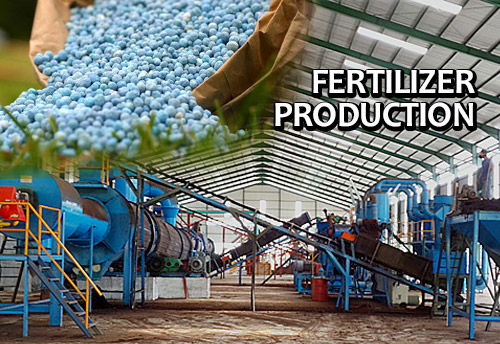Nature and Nurture: The Comprehensive Guide to Fertilizer Production

Fertilizers play a pivotal role in agriculture, providing plants with essential nutrients that might be lacking in the soil. But how are these crucial substances produced? The production process varies depending on the type of fertilizer, be it organic or inorganic. Here's an in-depth look at how different fertilizers are made:
1. Organic Fertilizers:
Organic fertilizers are derived from living or once-living organisms. Here's how they are typically produced:
- Compost: Made by decomposing organic matter such as kitchen waste, garden trimmings, or even animal manure in a controlled environment. Microorganisms break down this matter into nutrient-rich compost over several weeks or months.
- Animal Manures: Directly collected from animals. It may undergo a composting or aging process to reduce pathogens and break down nutrients.
- Bone Meal: Produced by steaming animal bones and then grinding them. This process ensures the product is pathogen-free and makes phosphorus more readily available for plants.
- Fish Emulsion: Derived from the decomposed by-products of the fishing industry. It’s a thick liquid made by grinding fish and extracting the oils, followed by breaking down the remaining matter with enzymes or natural decomposition.
2. Inorganic (Synthetic) Fertilizers:
These are produced through various industrial processes, often involving the use of mined raw materials or atmospheric gases:
- Ammonia Production: Central to many nitrogen-based fertilizers, ammonia is produced using the Haber-Bosch process. This involves combining nitrogen (from the air) and hydrogen (typically from natural gas) at high temperatures and pressures in the presence of a catalyst.
- Nitrogen Fertilizers: Urea, a common nitrogen fertilizer, is made by reacting ammonia with carbon dioxide. Other nitrogen fertilizers, like ammonium nitrate, are produced by neutralizing ammonia with nitric acid.
- Phosphatic Fertilizers: Often sourced from rock phosphate, which is mined, treated with acid, and then purified. The resultant products can be monoammonium phosphate (MAP) or diammonium phosphate (DAP), depending on the treatment process.
- Potassic Fertilizers: Derived from potash, which is mined from naturally occurring mineral deposits. Once mined, potash is refined and processed to produce the final potassium-containing product.
3. Organo-mineral Fertilizers:
These combine organic and mineral sources. The production process involves blending the mineral sources, like those mentioned above, with organic matter such as compost or animal manure.
4. Specialty and Customized Fertilizers:
These can be made by blending various nutrient sources in specific ratios as required. Some might include beneficial microorganisms or be tailored to slow or control the nutrient release rate. Water-soluble fertilizers, for instance, are formulated for easy dissolution in water.
The production of fertilizers is a complex process that marries chemistry, biology, and engineering. While the end goal is consistent—supplying nutrients for plant growth—the methods and sources are diverse. Whether derived from nature or crafted in a factory, fertilizers are essential tools in the quest for global food security and sustainable agriculture.